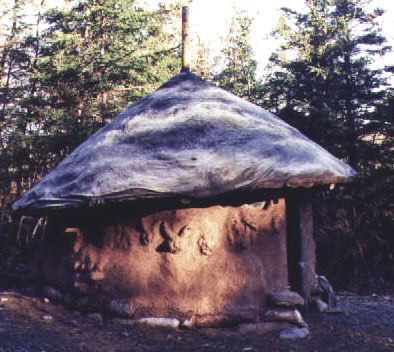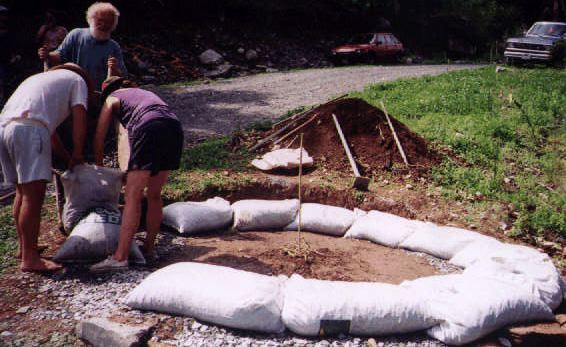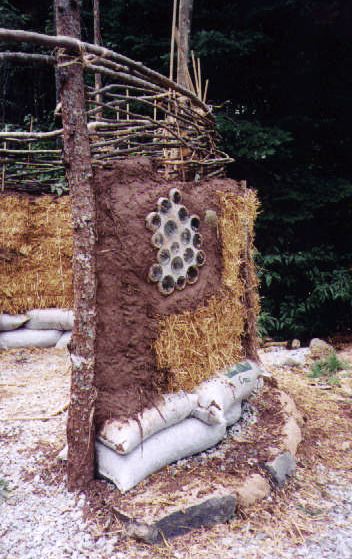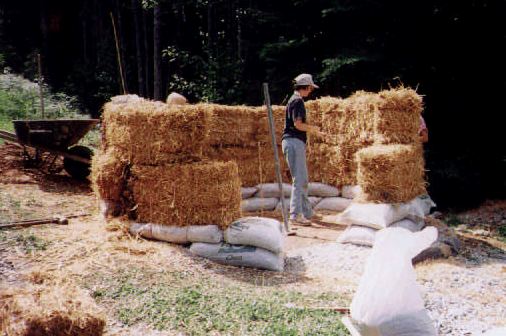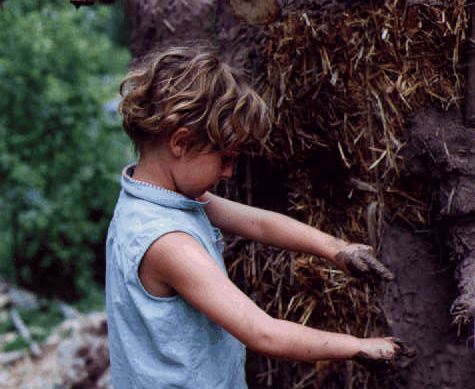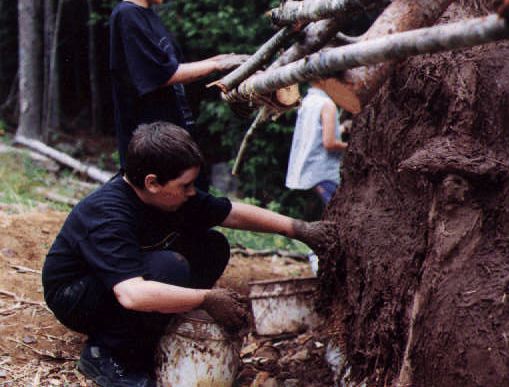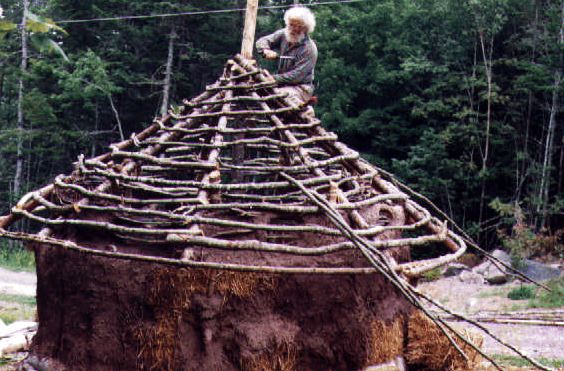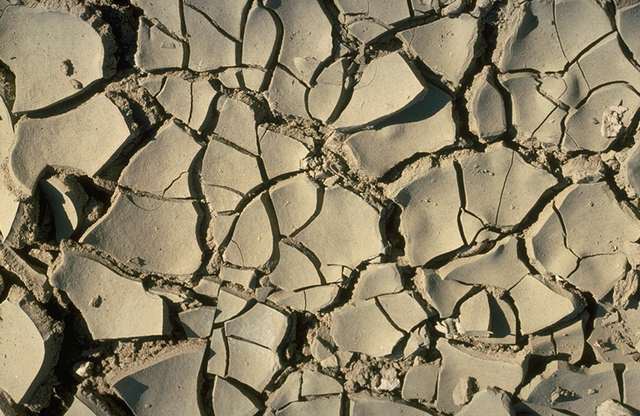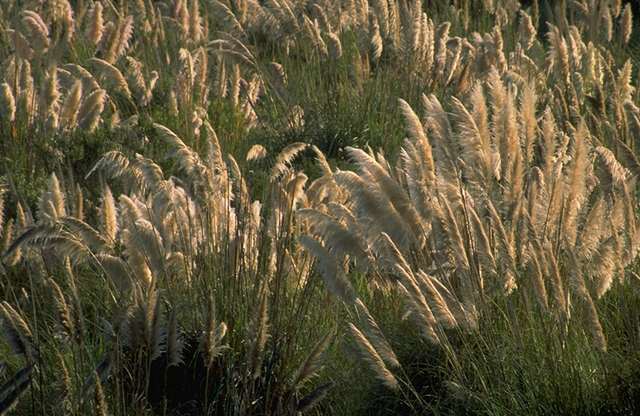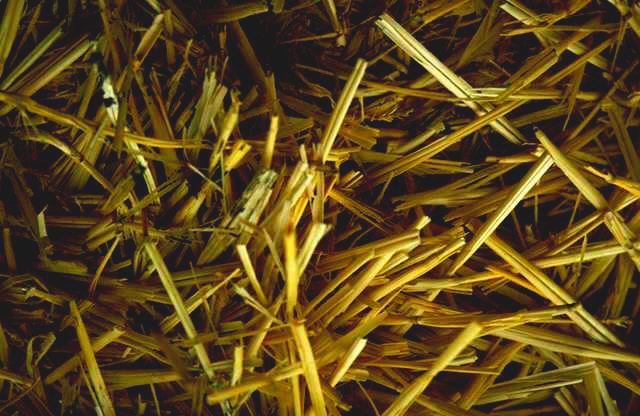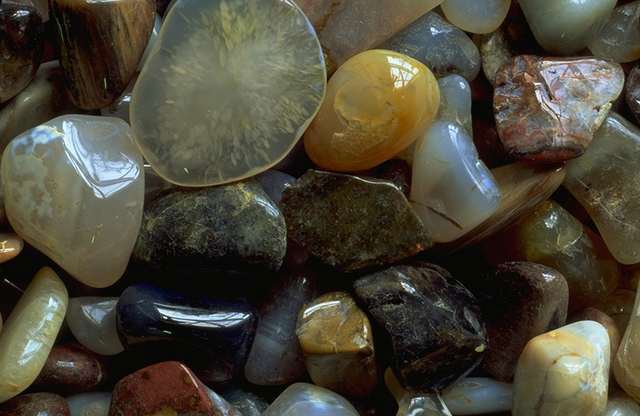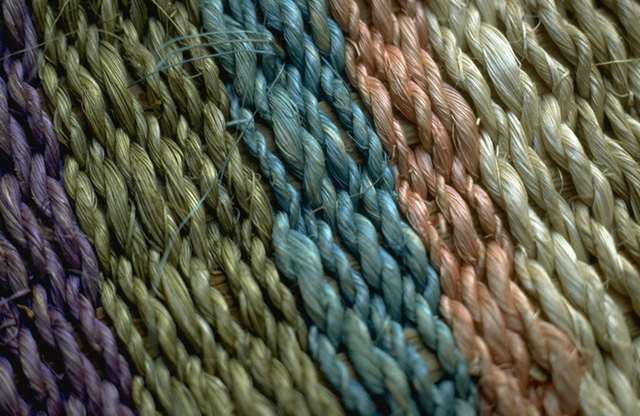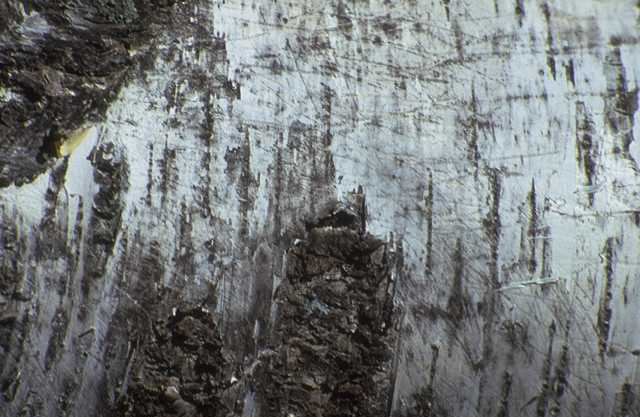This shelter was built in August, 1996 during a workshop led by Joseph Kennedy from New Mexico and Straw Bale Projects. The Round House was originally intended as a "chicken dream home", but the children claimed it for themselves before the hens could move in. The design was inspired by the Spanish architect Gaudi and by our quest for simple systems which respond well to the unique properties of straw bales.
Foundation
We used an experimental earth bag system which evolved from local traditional building knowledge, and work done by Nader Kahlili and Joseph Kennedy in California in the l980's.
A drainage trench a foot deep and filled with gravel will direct water away from the site. The principal being, if water can be directed away from the foundation then there will be nothing to precipitate the usual heaving. The site was leveled, cutting slightly into the hill. Recycled polypropylene feed sacks were filled with gravel. These were secured closed by stitching them with nails. The bags were laid out in a running bond.
This foundation uses local and recycled materials as well as less embodied energy than conventional systems.
Walls
Two - string straw bales were laid on the foundation in a running bond four courses high. Sapling lengths (three inches in diameter) were set every three feet along the inside and the outside of the wall to hold the bales in place. Baling twine laid between the bales was tightly fastened to the saplings on either side of the wall to hold the bales in place.
Wattle and daub was used to give additional height to the building and to create an earthen bond beam on which to rest the roof. Wattle and daub is an earth building technique which utilizes a woven wooden or bamboo frame as a form onto which mud plaster is applied in layers until the desired wall thickness is reached. It is probably the most ancient of earth building methods.
Plastering
Because we are interested in using low impact local materials, we used the magnificent clay available from the Lance area. Clay in the Ship Harbour area is very good as well.
Clay, sand and straw were mixed together and applied by hand to the walls. A finish coat will be troweled on for a fine finish similar to that of the bread oven. Adding on new layers to mud plasters is a simple procedure especially compared to cement plaster.
The relief works on this structure are the gifts of hands young and old. The creatures you see were shaped with "cob". Cob is a traditional mix of clay, sand and straw which is highly sculptural and is used to create monolithic walls and other forms, including bread ovens. It is an excellent source of thermal mass and is easy to do with minimal tools. Labor intensive but fun!
Roof
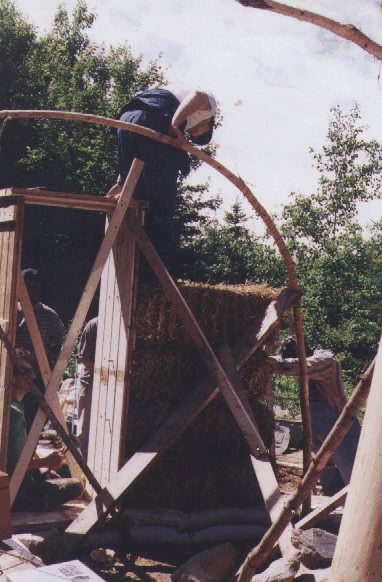 This roof is absolutely experimental in its scope. We are constantly
playing with ideas of how to create new roofing systems. This design (like
most every thing else at Ship Harbour) is a work in process. In our search
for an affordable water impermeable membrane, we decided to make our own.
This roof is absolutely experimental in its scope. We are constantly
playing with ideas of how to create new roofing systems. This design (like
most every thing else at Ship Harbour) is a work in process. In our search
for an affordable water impermeable membrane, we decided to make our own.
Spruce trees (five inch diameter) were lashed to a centre pole, then left to rest on the wattle and daub sill. Alders were used to create a series of concentric rings which were nailed to the rafters, these were spaced about every two feet. Burlap was stapled to the rafters. Roofing tar was painted onto the burlap and sand thrown into it before it dried, creating a kind of instant asphalt
We plan to add an African style, long thatch of local phragmities reeds or cattails.
Round House Building costs:
Materials (estimate) $200 Estimated labour 175 hr's.
